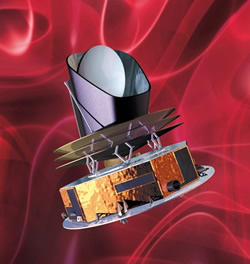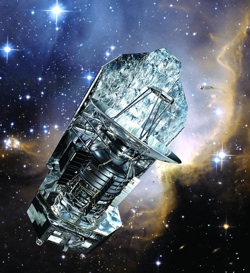| |
|
Planck and Herschel Exclusive Interviews

David Southwood
Director of Science and Robotic Exploration at the European Space Agency
Planck and Herschel are launching together but they are two very different missions, can you outline the main goals of both missions?
Yes they’re two very different missions and it’s very unjust that they’re called “Herschel and Planck” - they’re forever linked! The common factor is that they’re both cryogenic, they’re both cooled and they both look at the beginning of things. So there is some commonality, but I would really say in most respects they’re completely different.
What is the history behind the Planck mission?
Planck is looking at the noise that is always there - the Cosmic Microwave Background (CMB). In 1948 George Gamow realised that if there had been a big bang this would be there, and its discovery told us we live in a Universe where there is a big bang. I can tell you, before its discovery, as a boy in the 1950s, I was convinced there must be steady state Universe because it made more sense, but nowadays we take it for granted there was a big bang. You have to say this is one of the most important aspects of the last 50 years of discovery, realising we really did have a big bang, that the expansion somehow was structural and there was a beginning. What came before it we don’t know.
So what is Planck going to do?
Planck looks at this noise that is still there across the sky in the radio frequency at a temperature of less than three kelvin. So we have to make the telescope very, very cold to detect the radiation from the big bang, although the big bang was very hot. It’s more or less the same in all directions as you would expect from a big bang, but in fact there are slight irregularities, very, very minor departures. They are little localised spots but they fluctuate by parts in one million from one part of the sky to the next. What we’re doing is increasing the resolution, the scale over which we can look at these variations and at the same time looking at the nature of the light coming out, the so-called polarisation. Like with Polaroid sunglasses, there are two types of light and we want to know what type it is. Planck will slowly scan the sky. Planck is a surveyor; as a result it will collect an enormous set of data that astronomers will work on. There will be a long time (around 2 years) of surveying, then we’ll start analysing the data, although there will be some preliminary quick look results, too.
And what about Herschel?
Herschel is very different. It’s an observatory being pointed at objects. People write in proposals saying where it should be pointed. If you write a proposal and it’s accepted as satisfactory you cannot personally steer it but you can get to look at your part of the sky. It's open to the entire world, so to speak, as any observatory is, and you apply for time. Herschel is a very large space telescope. The mirror is the largest flown – 3.5 metres. But it wasn’t so long ago that a 4 metre telescope on the ground was a big deal. It’s gigantic. And it’s cooled to just above absolute zero, which is a major technical triumph. The last thing you want to do is cool the telescope itself, but you can cool the focal plane, so there are enormous problems making sure we have stray light out of the way and to make sure our sensors are really seeing the cosmos – the light coming in through the aperture of the telescope.
 What will Herschel be looking at? What will Herschel be looking at?
It’s an infrared (IR) telescope. With IR you look at the cold things and you can see the red hot spots. If you look in the IR, it's doing what William Herschel did. He saw he was getting heat as he sent his light through the prism broken down in the spectrum, and he could detect the temperature of all of the different colours. But when he held the thermometer beyond red it got even hotter. So it’s a bit like that. We’re seeing what our eyes cannot see. When we see a cloud of dust we see a cloud of dust, when we look in the IR, we can see the hot spots, but depending on what we’re looking at, for me, most exciting is to see the formation of planets, for somebody else it might be the formation of stars, for cosmologists the formation of galaxies. IR is essential. In space you take off the blinkers and you see the pure IR.
How long will the missions last?
Herschel will run for 5 years, but I hope it will run for longer. The problem with both missions is that they are cooled, so eventually we’ll run out of coolant. This is heartbreaking. It’s quite frightening in terms of planning for the ground operations. It has to be right and ready from the very beginning. The clock starts ticking as the cryogen runs out. |
|
 |
|
|



